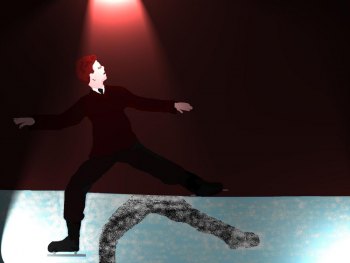
But London was an epicenter of figure skating throughout much of the 19th century, and as a member of the London Skating Club, Vandervell took the sport seriously.
In 1869 Vandervell co-authored, “System of Figure Skating,” which described skating techniques and figures. He invented a one-foot turn and pushed the idea of establishing tests. As Hines points out, those tests became part of the sport. Even today, “that’s how you qualify to compete.”
Ulrich Salchow (1877-1949; born in Denmark, lived in Sweden): To watch Olympic figure skating is to hear the words salchow and lutz and axel over and again. Those jumps have been around for the past 100 years.
Axel Paulsen of Norway contributed a difficult jump, the axel, during an international championship in 1882. Curiously, he didn’t win the competition. He placed third.
The lutz was developed by Alois Lutz, an Austrian, in the early 20th century. “He [Lutz] was an obscure skater,” Hines says. “If you look at the international competitions, his name doesn’t come up.”
Skating judges weren’t worried about pyrotechnics back then.
“Jumping didn’t become important until after World War I,” Hines says. Before that, "everything was about special figures.”
But while Salchow also introduced a jump, his career was about more than that. When discussing Salchow, Hines was reverent: “There you have a champion.”
Salchow won 10 world championships and the first Olympic gold medal in figure skating. Off the ice, he served as president of the International Skating Union (1925-'37). During that time, the World Championships, previously held in European cities, twice moved across the pond (New York in 1930 and Montreal in 1932). Under Salchow, the union adopted rules for ice dancing.
That might have happened anyhow, Hines points out. But Salchow undeniably shepherded the sport through its nascence.
Sonja Henie (1912-69; Norway): It helps to have wealthy parents. From the start, Sonja Henie had ballet lessons and skating lessons. But in fairness, she was a tireless worker and won competitions -- even as a young girl.
At 15, Henie upset Herma Szabo in the World Championships held in Oslo. Three of the judges were from Norway, and they wanted to Henie to win. The other two judges were from Austria and Germany, and they sided with Szabo, an Austrian. Afterward, skating officials made a rule: only one judge from any one country, Hines says. But by that time, the championship was over and Henie had won.
She kept winning, too -- gold medals in three Olympics and World Championships from 1927 to '36. In the process, her combination of athleticism and artistry set a high bar for future skaters.
After retiring from the sport, she toured, then moved to Los Angeles and began another career as a movie star. In no time, she was skating across movie screens coast to coast.
But she courted controversy, too. A Vanity Fair retrospective recounted that in 1936, while performing in Berlin, Henie glided across a rink, skidded to a stop and lifted her arm in salute to Adolf Hitler. The star – who’d brilliantly managed her career – later claimed she didn’t know what a Nazi was, the article reported.
This was well before the age of spin doctors and damage control, but Henie skated right over that thin ice. A 1948 New York Times story announced that 14,000 attended Henie’s ice show at the Madison Square Garden.